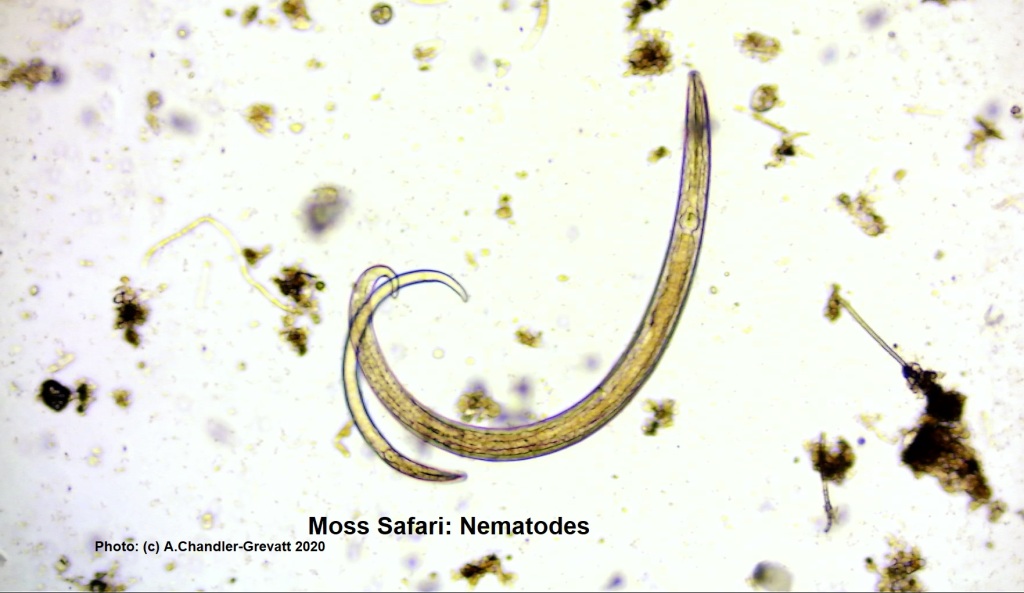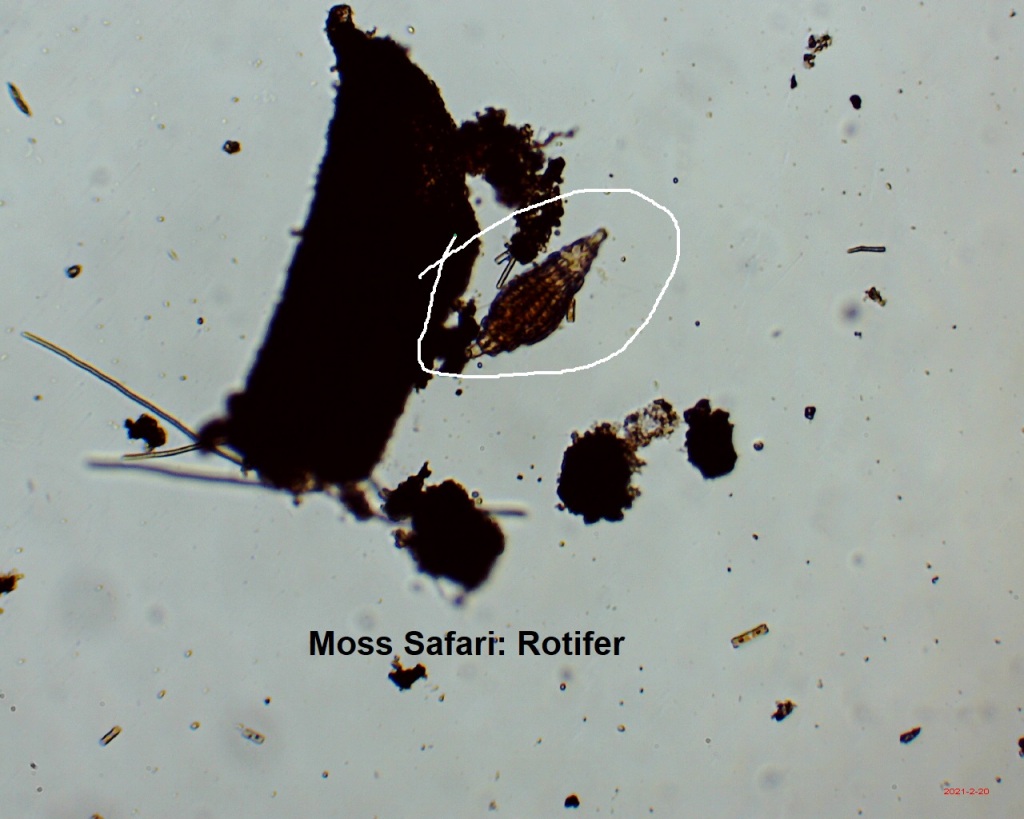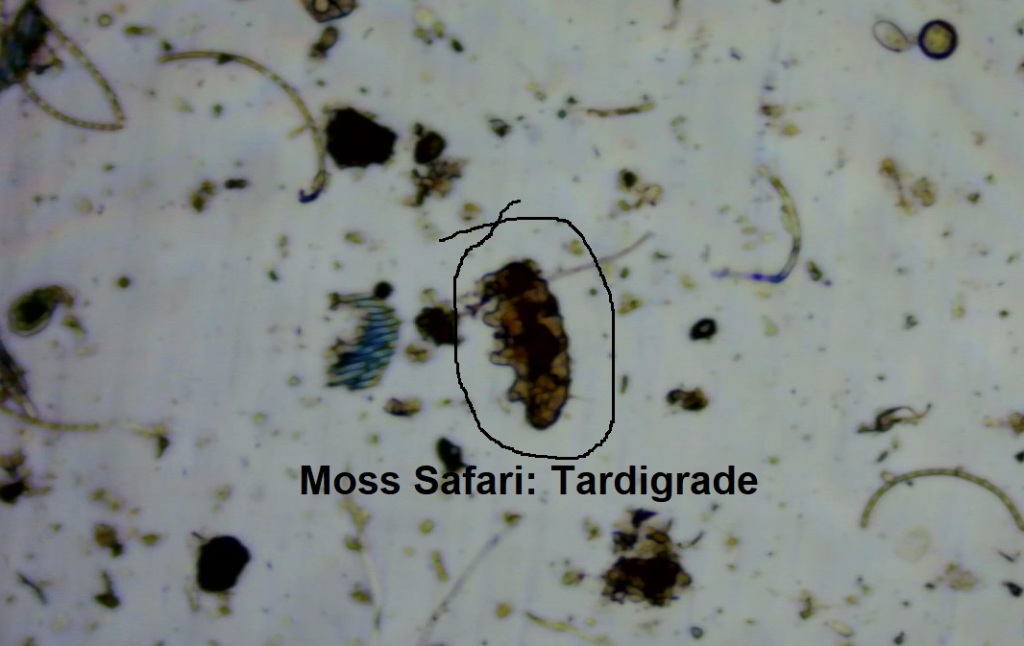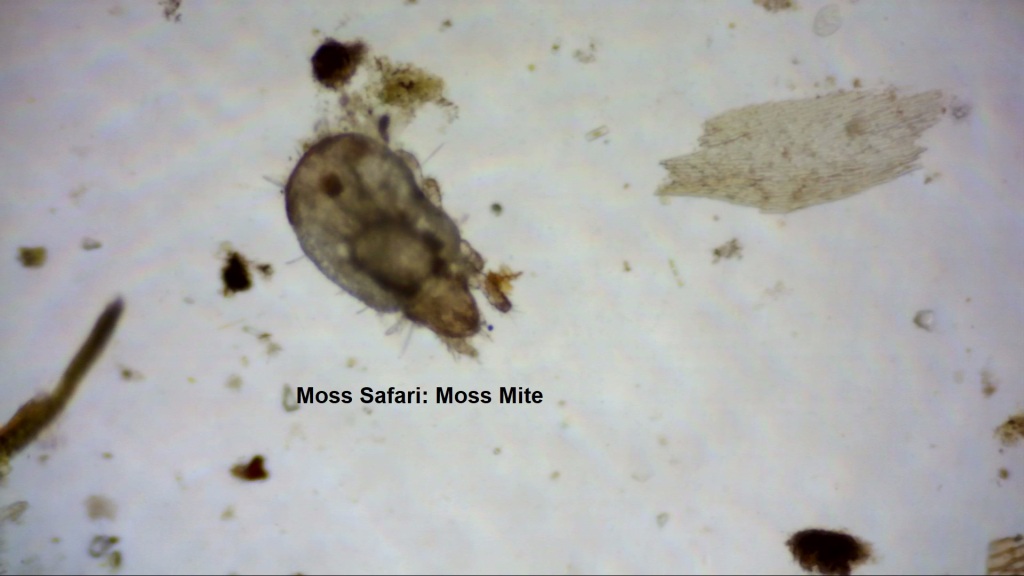The Big Five at Low Magnifications
These are all multicellular organisms that you may well see when viewing your Moss Squeeze at low magnifications. This is based on my own observations of roof moss and that of a paper written by Corbet & Lan (1974).
They are in order of abundance. I see nematodes on almost every Moss Safari, I usually see rotifers, occasionally see tardigrades and rarely see mites. I am yet to observe a gastrorich. Note that different moss, in different places, at different times of the year may have different organisms.
This list gives you an idea of what you might easily see at low magnifications. The gallery is of these may look like when at low magnifications.
Nematodes
- These are smooth worms with pointed ends.
- They are often observed thrashing or stationary.
- They are often transparent, but you may observe coloured food in their gut.
- Length: 200-900 micrometres.
- Known as ‘roundworms.’
- At higher magnifications you can see their mouth parts and internal organs including their digestive system and reproductive system.
Rotifers
- There are several kinds, but the basic body plan is a top end with fast moving cilia that create big currents, a mouth mid-way and some kind of foot at the end. However the can contract into a ball shape.
- Length: approx. 350 micrometres.
- Also known as ‘wheel animals’
- They have what I think looks a bit like a winking eye about half way down their bodies, but it is a mouth that open and closes.
- They are transparent and you will see their digestive systems and sometimes eggs inside them. There are Bdelloid and Ploimate rotifers if you want to try further identification.
Tardigrades
- This can be found stationary or moving. They have distinctive movement as they walk on chubby clawed legs. They a pointy ‘snout’ through which they feed.
- Length: 450 micrometres.
- Known as ‘waterbears’
- If you look carefully at their head you may see two red eyes. These are made of a single cell.
- Sometimes you will see an empty skin with eggs inside it.
Mites
- A variety of mites are found in moss. They have a relatively large dark body and eight legs that move in a similar way to a spider or beetle.
- Length: 600 micrometres
- Mites are arthropods (spider family) with eight legs. Adjusting the lighting often allows the body to become translucent.
Gastrotrichs
- A flat worm like organisms covered in ‘hairs’, cilia with a forked tail. Using it’s cilia against a surface, it glides gracefully.
- Length:100-300 micrometres.
Reference:
Corbet, S. A., & Lan, O. B. (1974). Moss on a Roof, and What Lives in it. Journal of Biological Education, 8(3), 153-160.



